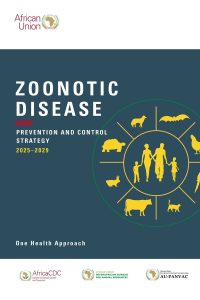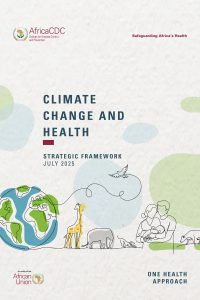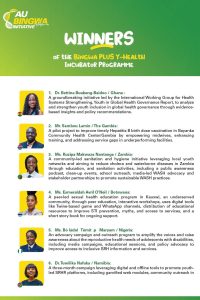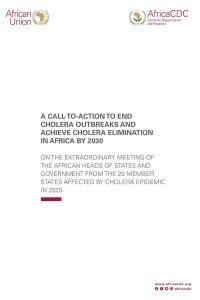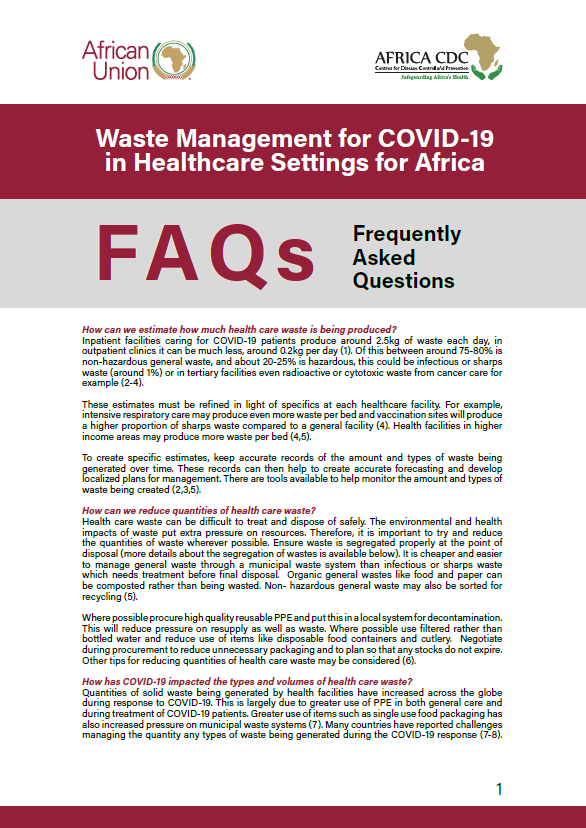
- Version
- Download 3094
- File Size 159.75 KB
- File Count 1
- Create Date 24 January 2022
- Last Updated 25 January 2022
FAQs: Waste Management for COVID-19 in Healthcare Settings for Africa
How can we estimate how much health care waste is being produced?
Inpatient facilities caring for COVID-19 patients produce around 2.5kg of waste each day, in outpatient clinics it can be much less, around 0.2kg per day (1). Of this between around 75-80% is non-hazardous general waste, and about 20-25% is hazardous, this could be infectious or sharps waste (around 1%) or in tertiary facilities even radioactive or cytotoxic waste from cancer care for example (2-4).
These estimates must be refined in light of specifics at each healthcare facility. For example, intensive respiratory care may produce even more waste per bed and vaccination sites will produce a higher proportion of sharps waste compared to a general facility (4). Health facilities in higher income areas may produce more waste per bed (4,5).
To create specific estimates, keep accurate records of the amount and types of waste being generated over time. These records can then help to create accurate forecasting and develop localized plans for management. There are tools available to help monitor the amount and types of waste being created (2,3,5).
How can we reduce quantities of health care waste?
Health care waste can be difficult to treat and dispose of safely. The environmental and health impacts of waste put extra pressure on resources. Therefore, it is important to try and reduce the quantities of waste wherever possible. Ensure waste is segregated properly at the point of disposal (more details about the segregation of wastes is available below). It is cheaper and easier to manage general waste through a municipal waste system than infectious or sharps waste
which needs treatment before final disposal. Organic general wastes like food and paper can be composted rather than being wasted. Non- hazardous general waste may also be sorted for recycling (5).
Where possible procure high quality reusable PPE and put this in a local system for decontamination. This will reduce pressure on resupply as well as waste. Where possible use filtered rather than bottled water and reduce use of items like disposable food containers and cutlery. Negotiate during procurement to reduce unnecessary packaging and to plan so that any stocks do not expire. Other tips for reducing quantities of health care waste may be considered (6).
Attached Files
| File | Action |
|---|---|
| Waste Management for COVID-19 in Healthcare Settings for Africa | Download |


